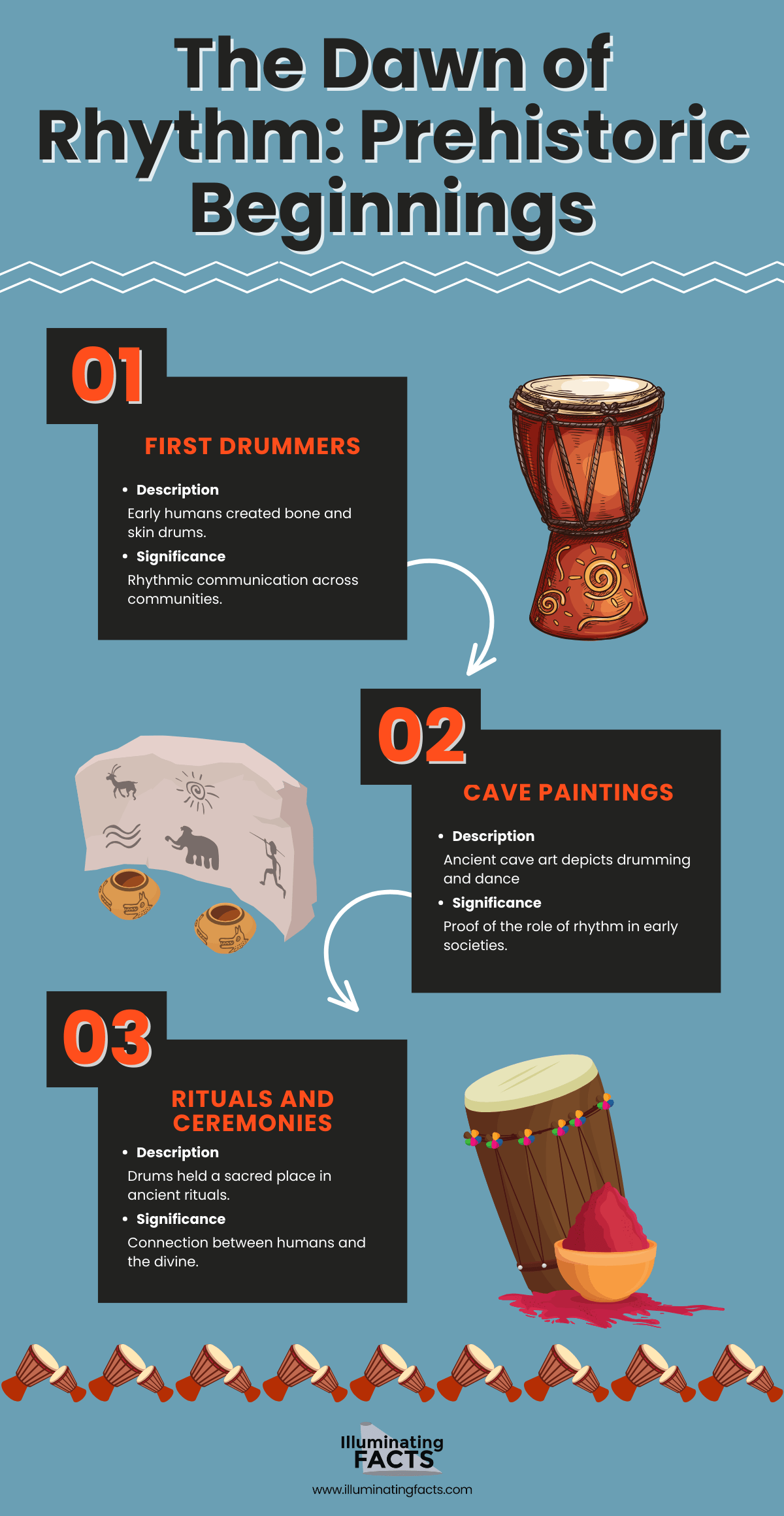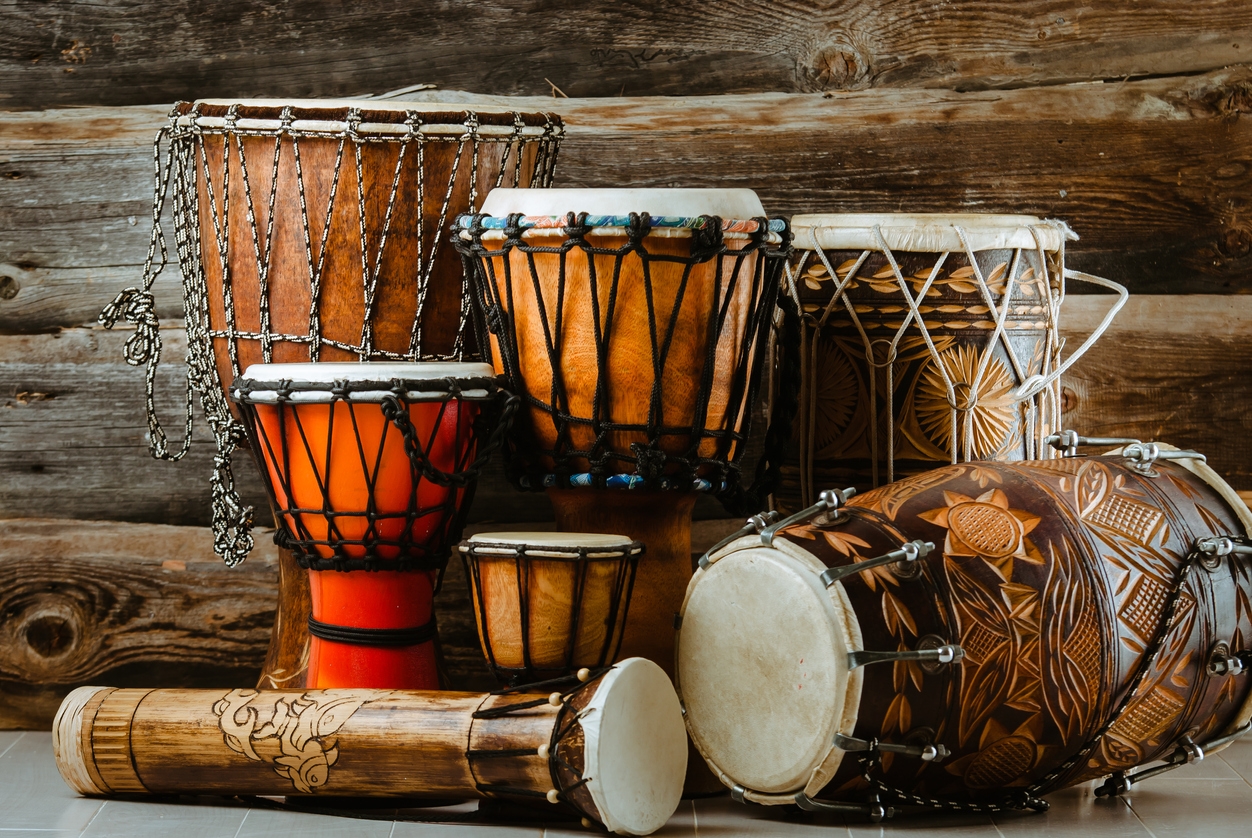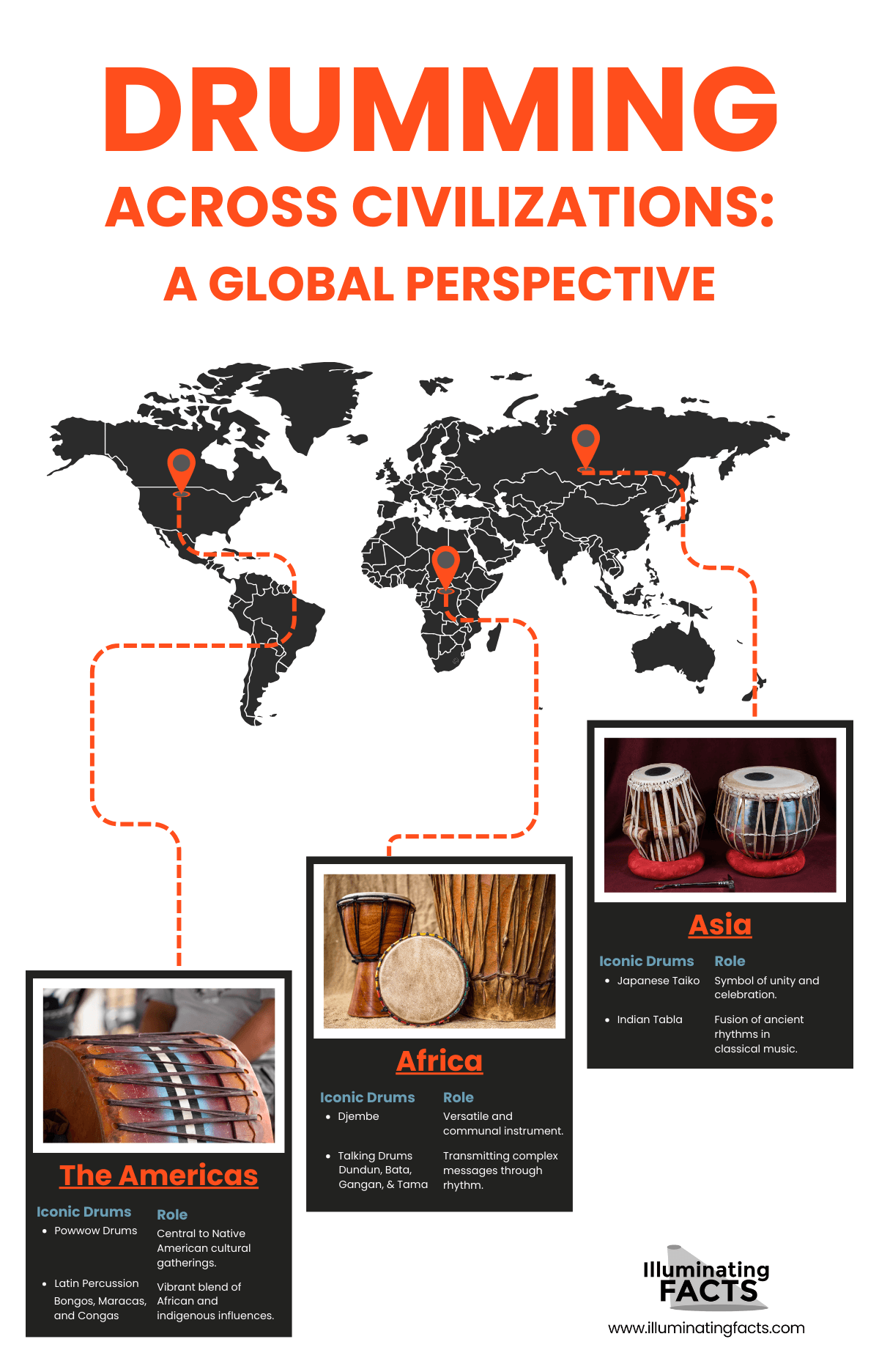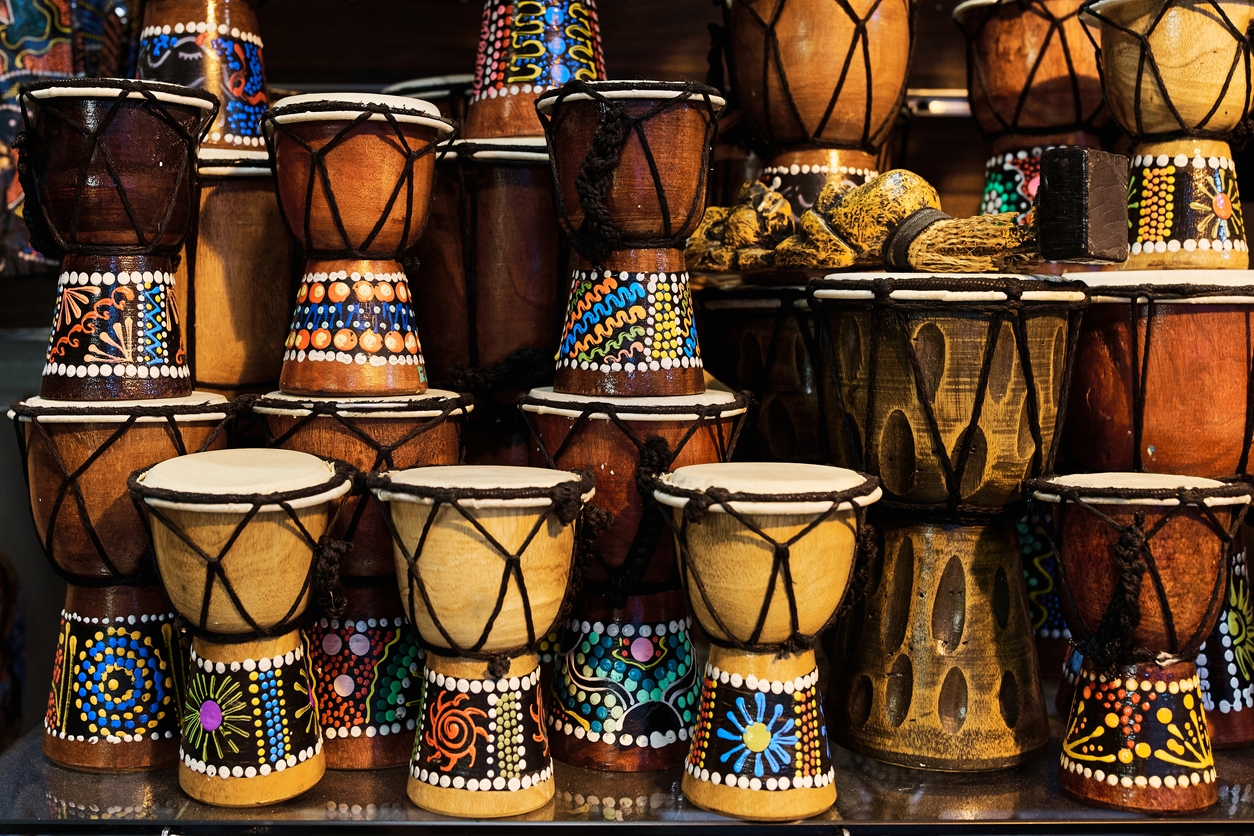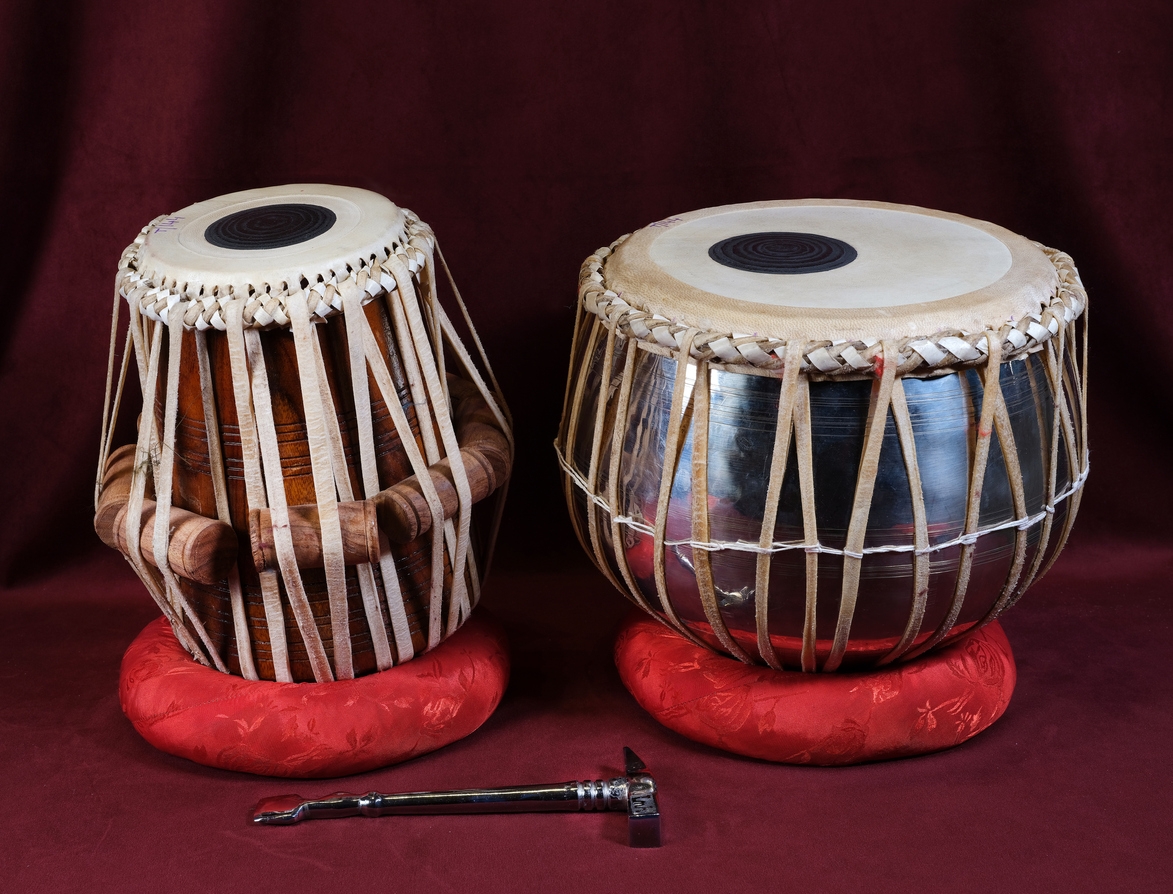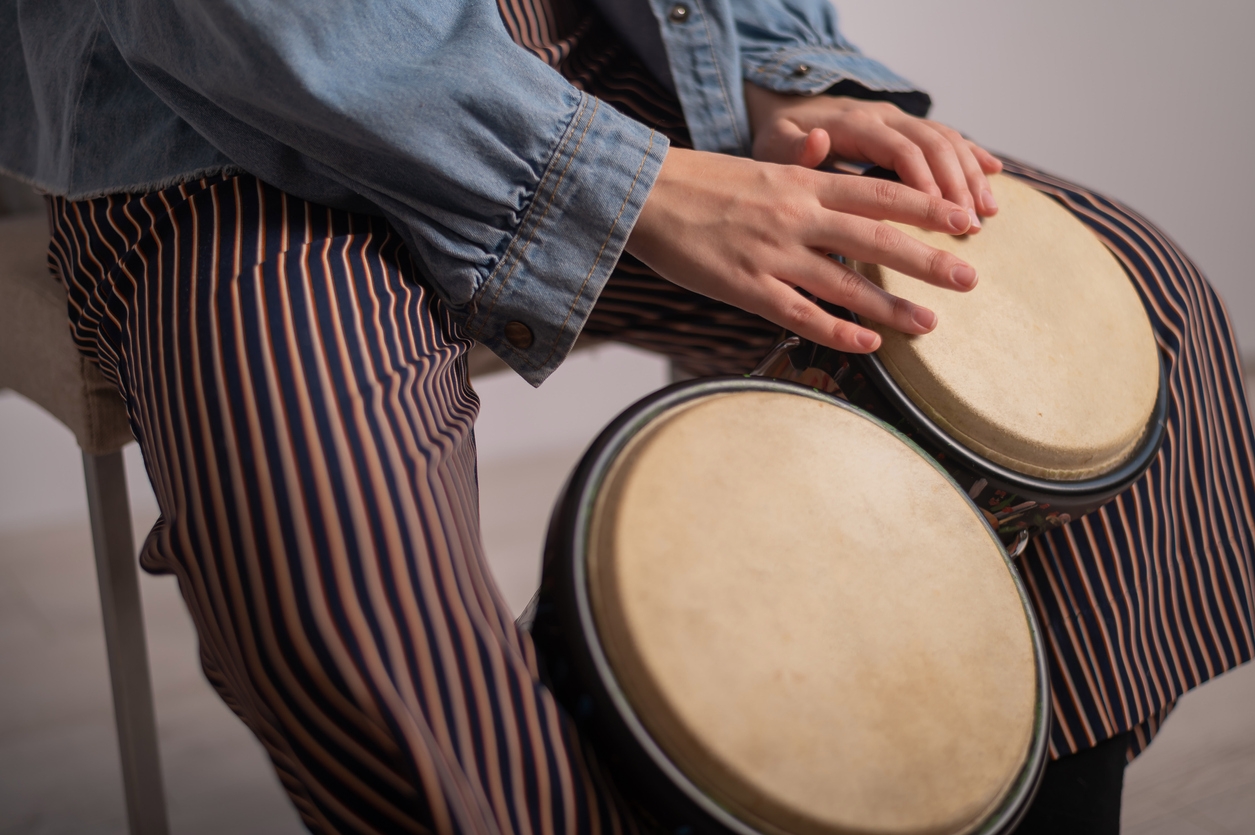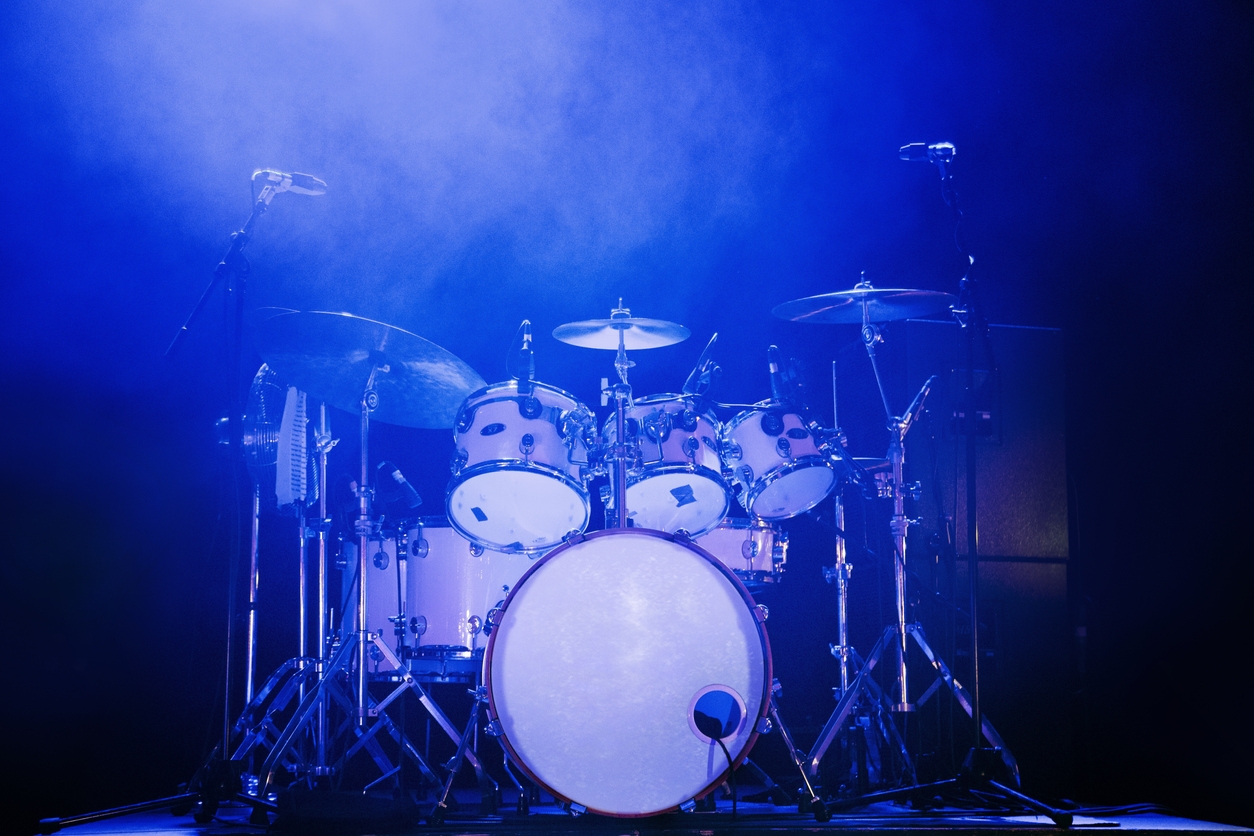Drumming is not just an art form, it’s a cultural touchstone. From the earliest beats of a hand against a hollow log to the thunderous crescendo of a modern drum kit, rhythm has been the heartbeat of human existence. It’s a language we all understand, transcending barriers of culture, time, and place. It has played a central role in rituals, celebrations, and communication for millennia.
This blog embarks on a rhythmic odyssey, delving deep into the origins of drumming and tracing its evolution through time. We’ll learn about the drums’ diverse shapes, sizes, and sounds and understand the profound influence they’ve had on music, culture, and even our own bodies. Join us as we uncover the beats that echo through history, connecting us all through the universal language of rhythm.
The Dawn of Rhythm: Prehistoric Beginnings
Long before recorded history, early humans discovered rhythm’s primal pulse.
Aspect | Description | Significance |
First Drummers | Early humans created bone and skin drums. | Rhythmic communication across communities. |
Cave Paintings | Ancient cave art depicts drumming and dance | Proof of the role of rhythm in early societies. |
Rituals and Ceremonies | Drums held a sacred place in ancient rituals. | Connection between humans and the divine. |
The First Drummers: Early Humans
Long before sophisticated drums, early humans crafted simple percussion instruments from bones and animal skins. [1] These primitive tools allowed them to produce basic rhythms that served both practical and ceremonial purposes.
Drumming played a pivotal role in early human communication. Tribes used rhythmic patterns to convey messages across vast distances, facilitating coordination during hunting, signaling danger, and even expressing emotions. [2]
Cave Paintings and Ancient Artifacts
The evidence of our rhythmic past lies etched in the walls of ancient caves and preserved in artifacts. Cave paintings from thousands of years ago depict scenes of drumming and dance, showcasing the integral role of rhythm in early societies. [3] Artifacts like drums made from clay, wood, and animal hides have been unearthed from archaeological sites worldwide, providing a glimpse into the diverse forms of early percussion instruments.
The Role of Drumming in Rituals and Ceremonies
Drumming was not confined to everyday life; it held a sacred place in rituals and ceremonies. From rain dances in indigenous cultures to tribal initiation rites, drums acted as conduits to the spiritual realm. Their rhythms were believed to connect humans with the divine, invoking both ecstasy and reverence. In this section, we explore how drumming transcended the mundane and became an essential part of ancient rituals and ceremonies, resonating through the ages with its primal power. [4]
Drumming Across Civilizations: A Global Perspective
Across continents and cultures, the rhythmic heartbeat of drumming has echoed through the annals of history.
| Civilization | Iconic Drums | Role |
| Africa | Djembe | Versatile and communal instrument. |
| Talking Drums
(Dundun, Bata, Gangan, and Tama) |
Transmitting complex messages through rhythm. | |
| Asia | Japanese Taiko | Symbol of unity and celebration. |
| Indian Tabla | Fusion of ancient rhythms in classical music. | |
| The Americas | Powwow Drums | Central to Native American cultural gatherings. |
| Latin Percussion
(Bongos, Maracas, and Congas) |
Vibrant blend of African and indigenous influences. |
Africa: The Cradle of Rhythm
Africa is often referred to as the birthplace of rhythm. The African tribes and culture boasts a rich tapestry of drumming traditions. Among the most iconic is the Djembe, a goblet-shaped drum known for its versatility. [5] Alongside it, Talking Drums, such as the West African “Tama,” conveyed complex messages through intricate rhythms. [6]
These drums transcended mere musical instruments, playing pivotal roles in spiritual practices, communal gatherings, and storytelling, binding African societies together through their heartbeat-like rhythms.
Asia: Taiko and Tabla
In Asia, drumming takes diverse forms. Japanese Taiko drums, large and thunderous, command attention with their powerful beats. [7] These drums, once instruments of war, have evolved into symbols of unity and celebration.
Meanwhile, India’s Tabla drums create intricate rhythms, reflecting the country’s rich musical heritage. [8] The fusion of ancient rhythms with modern melodies has made Tabla an integral part of classical and contemporary Indian music, captivating audiences worldwide.
The Americas: Powwow Drums and Bongos
In the Americas, indigenous cultures celebrate their heritage through drumming. Powwow Drums are central to Native American communities, serving as the rhythmic core of their cultural gatherings. [9]
On the other hand, Latin percussion, epitomized by Bongos, Maracas, and Congas, brings a vibrant blend of African and indigenous influences to the music of the Americas. [10] These rhythms, whether echoing through a powwow circle or infusing Latin dance, illustrate the enduring vitality of drumming across the Western Hemisphere.
The Science of Rhythm: More Than Just Beats
Beyond its captivating auditory appeal, rhythm holds a deeper significance that transcends mere beats.
The Psychology of Rhythm
Rhythm has a profound impact on the human psyche. Researchers have explored the “Mozart Effect,” where certain rhythms and melodies enhance cognitive functions and memory. [11]
Drumming has gained recognition for its therapeutic potential in addressing mental health issues. Studies show that rhythmic activities can alleviate stress, anxiety, and depression, offering a unique avenue for emotional expression and healing. [12]
Acoustics and Sound Waves
The world of acoustics unravels the intricate relationship between rhythm and sound. Sound waves, shaped by the drums’ materials and construction, create unique timbres. Understanding the physics of how sound travels through air and how different instruments produce distinct tones is fundamental. This knowledge underpins the art of drum making and sound engineering, shaping the way we create and appreciate music.
The Mathematics of Rhythm
Beyond its emotional and auditory dimensions, rhythm has a mathematical foundation. Musicians and mathematicians alike have explored the mathematical patterns and sequences that underpin rhythm. This intersection of music and math is one of the interesting facts about the music industry. It provides a fascinating glimpse into the precision and complexity of rhythmic structures, enriching our understanding of this universal language of expression.
| Aspect | Mathematical Explanation |
| Time Signatures | Time signatures like 4/4, 3/4, etc., dictate the number of beats per measure, guiding musicians through rhythmic patterns. |
| Tempo and Beats per Minute (BPM) | BPM quantifies the tempo or speed of a rhythm, indicating the number of beats in a minute. |
| Rhythmic Ratios | Rhythmic patterns often involve ratios, such as 2:1 (half notes to quarter notes), creating syncopation and complexity. |
| Polyrhythms | Polyrhythms, like 3 against 4, involve multiple rhythmic patterns occurring simultaneously, showcasing mathematical complexity. |
| Fibonacci Sequence | Some rhythms, like the Fibonacci rhythm, follow the Fibonacci sequence, adding or subtracting beats according to this mathematical progression. |
| Fractals in Music | Fractal geometry is observed in some musical compositions, where patterns repeat on multiple scales, revealing mathematical self-similarity. |
Modern Drumming: Evolution and Innovation
Drumming, an age-old practice that has transcended centuries, continues to evolve and adapt in the modern world.
The Drum Set: A 20th Century Invention
The 20th century witnessed a revolution in drumming with the advent of the drum set. This versatile ensemble of drums, cymbals, and percussion instruments became the heartbeat of jazz and later rock ‘n’ roll music. Drummers like Gene Krupa and Buddy Rich set the stage for drum solos and intricate rhythms, contributing to the rise of drumming as a dynamic and central element in modern music.
The advent of electronic drum kits in the latter half of the century further expanded the possibilities of drumming, allowing for a wide range of synthesized sounds and effects.
Aspect | Acoustic Drum Set | Electric Drum Set |
Sound Generation | Acoustic sound produced by striking physical drums | Electronic sound produced by triggering digital samples |
Volume Control | Limited control Loud and cannot be silenced | Adjustable volume Headphones can be used for silent play |
Portability | Bulky and less portable | Compact and highly portable, ideal for small spaces |
Sound Customization | Limited sound customization | Extensive sound options, often with various preset kits |
Versatility | Predominantly used for live performances | Suited for various music styles and recording environments |
Maintenance | Requires occasional tuning and maintenance | Low maintenance, no need for tuning or drumhead replacement |
Cost | High initial investment, lower long-term maintenance costs | Higher initial investment, lower long-term maintenance costs |
Drumming in Popular Culture
Drumming’s influence permeates popular culture, with iconic drummers becoming legendary figures in the music industry. Names like Keith Moon, John Bonham, and Neil Peart are celebrated for their virtuosity and showmanship.
| Drummer | Claim to Fame |
| Gene Krupa | Pioneer of drum solos and influential in jazz music. |
| Buddy Rich | Renowned for his speed and precision on the drums. |
| John Bonham | Drummer for Led Zeppelin, known for powerful beats. |
| Keith Moon | The wild drummer of The Who, famous for his antics. |
| Neil Peart | Drummer and lyricist for Rush, known for complex rhythms. |
| Ginger Baker | Drummer of Cream, a key figure in rock drumming. |
Beyond live performances, drumming plays a pivotal role in movies and TV shows, providing dramatic tension and rhythm to cinematic sequences. From epic battle scenes to heart-pounding car chases, the art of drumming enhances storytelling and captivates audiences.
Iconic Drumming Scenes in Movies
| Movie Title | Drumming Scene Description |
| This Is Spinal Tap (1984) | Hilarious moments featuring Nigel Tufnel’s absurd drum kit modifications and comical drumming incidents. |
| That Thing You Do! (1996) | The band “The Wonders” performed their hit song “That Thing You Do!” with a catchy drum intro. |
| Almost Famous (2000) | Scenes featuring the charismatic drummer character Ed Vallencourt and his energetic drumming during concerts. |
| The Drummer (2007) | The film follows the life of a young man who becomes a drummer for a rock band, showcasing various drumming performances. |
| Whiplash (2014) | The intense drumming sequences featuring Andrew Neiman, a young jazz drummer, and his demanding instructor Terence Fletcher. |
Memorable Drumming Moments in TV Shows
| TV Show Title | Drumming Scene Description |
| Friends (Season 3, Episode 10) | Ross Geller, played by David Schwimmer, gets involved in a drumming class and performs a memorable drum solo. |
| The Office (Season 7, Episode 12) | Andy Bernard, played by Ed Helms, showcases his drumming skills in the episode titled “Ultimatum.” |
| Lost (Season 2, Episode 10) | Sawyer, played by Josh Holloway, finds a collection of DHARMA Initiative supplies, including a drum kit, and indulges in some drumming. |
| Community (Season 2, Episode 23) | The characters form a “Drumstravaganza” band and participate in a drumming competition. |
| The Simpsons (Various Episodes) | Bart Simpson has several drumming moments, including joining a drumming band and playing drums in the school band. |
Drumming as a Form of Social Connection
In contemporary society, drumming serves as more than just a musical expression. It’s a tool for social connection and community building. Drum circles, workshops, and team-building activities incorporate drumming to foster unity, enhance communication, and promote well-being. This modern approach to drumming demonstrates its adaptability and enduring relevance in an ever-changing world.
Conclusion
From its humble beginnings as a means of communication in ancient civilizations to its integral role in modern music, drumming has remained a universal language that transcends cultural barriers. Its ability to evoke emotions, forge connections, and inspire creativity is nothing short of remarkable. As drummers continue to innovate and explore new horizons, the beat goes on, reminding us that the power of rhythm is both ageless and everlasting. So, let’s keep the drumming alive, for it is a heartbeat that resonates through the very essence of human expression.
References
- MasterClass. (2020, July 20). A brief history of drums: On the origin of percussion. https://www.masterclass.com/articles/a-brief-history-of-drums
- Kirby, S. (2018, August 13). The power of the drum: Sally Kirby champions the beat. Journeys by Design. https://journeysbydesign.com/the-luxury-of-adventure/the-power-of-the-drum-sally-kirby-champions-the-beat
- Pachmarhi cave paintings. (2023, July 26). MAP Academy. https://mapacademy.io/article/pachmarhi-cave-paintings/
- The power of African drums: An ancient tradition alive in the present. (n.d.). Low End Theory Club – Play the moment. https://www.lowendtheoryclub.com/the-power-of-african-drums-an-ancient-tradition-alive-in-the-present/
- The Djembe. (n.d.). Drum Africa. https://www.drumafrica.co.uk/articles/the-djembe/
- Spinditty.com. (n.d.). spinditty.com. https://spinditty.com/instruments-gear/The-Talking-Drum-The-Talking-Drum-Kalangu-Gungun-Odondo-drum
- Taiko drums have a rich history in Japanese music from warfare to theatre. (2023, May 31). Go! Go! Nihon. https://gogonihon.com/en/blog/taiko-drums-the-historical-japanese-instrument/
- Unraveling the mysteries of tabla: How many drums does it consist of? (n.d.). FuelRocks – THE UNOFFICIAL FAN SITE. https://www.fuelrocks.com/unraveling-the-mysteries-of-tabla-how-many-drums-does-it-consist-of/
- What to know about the Native American powwow – Tachini drums. (n.d.). Tachini Drums. https://tachinidrums.com/what-to-know-about-the-native-american-powwow/
- The many instruments of Latin American music. (2022, October 15). Bright Star Musical – Hear it. See it. Live it. https://brightstarmusical.com/the-many-instruments-of-latin-american-music/
- The Mozart effect (Explaining a musical theory). (2022, April 27). Incadence – Telehealth Music Therapy. https://www.incadence.org/post/the-mozart-effect-explaining-a-musical-theory
- RCM finds drumming has positive impact on mental health. (n.d.). Royal College of Music. https://www.rcm.ac.uk/about/news/all/2016-03-16rcmfindsdrumminghaspositiveimpactonmentalhealth.


